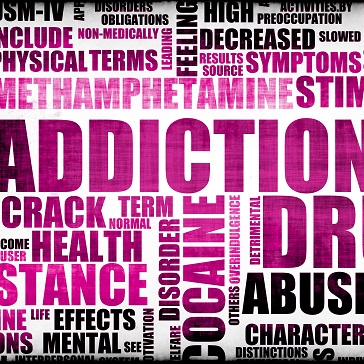Studies reveal that anti-smoking and anti-drinking campaigns are working. Smoking rates in the U.S. have fallen dramatically. But not everyone is being helped with their substance abuse problems.
Dr. Sarah M. Hartz, an assistant professor of psychiatry at Washington University School of Medicine in St. Louis, is the author of a new study done in conjunction with the University of Southern California that shows individuals with severe mental illness have higher rates of substance abuse.
Unique Treatment For Substance Abuse And Mental Illnesses
The National Alliance on Mental Illness says health professionals estimate that half of the individuals who suffer from a psychiatric disorder also abuse alcohol, tobacco or drugs. Trying to manage a mental illness becomes twice as difficult when it is coupled with trying to also manage a substance abuse problem. Each illness demands its own treatment and must be treated individually for the person to heal completely.
Higher Percentages For Drinking And Smoking
Half of the 20,000 participants in Hartz’s study were diagnosed with bipolar disorder, schizophrenia or schizoaffective disorder. When the psychiatric patients were compared with individuals from the general public, the psychiatric patients had higher rates of using alcohol, smoking tobacco, smoking marijuana and other drug use.
While 75 percent of the mental illness participants were tobacco smokers, only 33 percent of other participants smoked. Thirty percent of mental illness participants were binge drinkers compared to eight percent of other participants. Fifty percent of the mental illness participants used marijuana regularly compared to 18 percent of the other participants. Fifty percent also used other illicit drugs compared to only 12 percent of the mentally healthy participants.
How Race Plays A Role In Substance Use
In other studies on alcohol and drug abuse, race and ethnicity sometimes determines the prevalence of their use. Some groups are more susceptible to use than others. In this study, all races and ethnicities were susceptible if they had a severe mental illness.
Turning To Substances To Escape Negative Emotions Causing Hidden Problems
When mental illness affects thoughts and emotions, individuals sometimes turn to substance use to escape. Tobacco and alcohol use over the years can cause heart disease, cancer, liver failure and other physiological problems that can ultimately end their life. Dr. Hartz sees these physiological problems as the hidden problems.
People with a mental illness may be carefully watched for any signs of suicidal thoughts but not watched as carefully for emphysema. Because loved ones may be so concerned about immediate tragic events like a drug overdose or suicide, they may miss seeing long-term threats from tobacco, alcohol or other substances.
Hartz notes that mental illness patients have a shorter life span by one to two decades than the average person. This isn’t because of immediate tragedy spurred by their mental illness. Most of the causes are ones like cancer and heart disease that were developing in their body over the years.
Finding A Way To Help, Holistically
Mental health specialists look holistically at their patients. They seek and address all of the problems that are affecting the mind and body of a person with mental illness. Hartz believes that if all specialists were to ask their patients about their tobacco, drug and alcohol use that more patients could be led to a happier and healthier life. Through initial screenings and periodic follow-ups, patients could be monitored for any previous substance use or any new substance use that may develop during their treatment.
Trying the tried and true strategies of smoking and drug intervention doesn’t often work for mental health patients, cautions Hartz. Through her studies she has noticed that mental health patients need their own style of intervention in order to heal. As new strategies arise to combat alcohol and drug abuse specifically in people with mental illness, holistic healing can begin.
Read More About Holistic Rehab Therapy!
29 Jan 2014
Is PCP Use Dangerously Increasing?
PCP is a well-known nickname for phencyclidine, a powerful tranquilizer that, among its other effects, interferes with the ability to remain consciously connected to the self or to one’s surroundings. Since the 1960s, the tranquilizer has been purposefully or unintentionally used as a recreational drug by a small but significant number of teenagers and adults. For a long time, PCP seemed to drop in popularity among drug users. However, according to the results of a report released in November 2013 by the federal Substance Abuse and Mental Health Services Administration (SAMHSA), use of the use of PCP may be on the rise.
PCP’s Effects
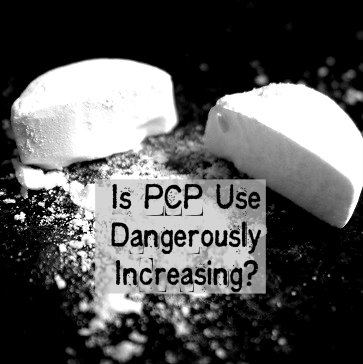 PCP produces its effects as a tranquilizer by causing dissociation, a detached mental state featuring a diminished capacity to take in the sensory information that human beings rely on to stay oriented to reality and maintain self-awareness. The drug can also produce a number of other immediate or short-term effects, including hallucinations, delusional behavior, paranoia, unusual aggression or agitation, euphoria, panic, a lack of normal mental or physical responsiveness, speaking difficulties, muscle impairment, changes in breathing and heart rates, obsessive thought patterns and depression.
PCP produces its effects as a tranquilizer by causing dissociation, a detached mental state featuring a diminished capacity to take in the sensory information that human beings rely on to stay oriented to reality and maintain self-awareness. The drug can also produce a number of other immediate or short-term effects, including hallucinations, delusional behavior, paranoia, unusual aggression or agitation, euphoria, panic, a lack of normal mental or physical responsiveness, speaking difficulties, muscle impairment, changes in breathing and heart rates, obsessive thought patterns and depression.
The specific short-term effects of PCP in any given individual depend largely on the amount of the drug he or she consumes. People who take doses well over 10 mg can experience a phencyclidine-related overdose that leads to seizures, coma or loss of life. Potential long-term effects of habitual PCP use include chronic memory problems, chronic psychosis and persistent depression or anxiety.
Tracking PCP Use
In the U.S., the federal government tracks the use of PCP and other commonly abused substances in a number of ways. For instance, the National Institute on Drug Abuse tracks usage rates among teenagers through an annual project called Monitoring the Future, which uses statistics gathered from 130 strategically chosen high schools to estimate larger national substance intake trends. The Substance Abuse and Mental Health Services Administration tracks drug use in the entire U.S. population by gathering information on drug-related incidents from emergency rooms at hospitals across the country, as well as information on drug-related deaths submitted by both coroners and medical examiners after they conduct autopsies. The system used to coordinate this information and issue important findings is called the Drug Abuse Warning Network (DAWN).
Evidence For A Rise In PCP Use – Who’s Using?
In the report issued by SAMHSA, officials from the Drug Awareness Warning Network tracked the national trajectory of PCP-related emergency room visits between 2005 and 2011. In 2005, 14,825 incidents were reported by emergency room personnel. By the close of 2011, this figure had risen to 75,538, or slightly more than five times the 2005 total. Much of this increase can be attributed to a serious spike in PCP-related episodes in the two years between 2009 and 2011.
The DAWN report contains a wealth of detailed information on exactly who is being impacted by the rise in PCP-related emergency room episodes. Among preteens and teenagers between the ages of 12 and 17, emergency room episodes increased by 184 percent between 2005 and 2011. Among older teenagers and young adults between the ages of 18 and 24, episodes increased by 289 percent.
However, the highest increases occurred among adults between the ages of 25 and 34; people in this age group experienced a 518 percent spike in PCP-related emergency room visits between 2005 and 2011. Adults between the ages of 35 and 44 experienced a 300 percent increase. No accurate figures were available for adults over the age of 44. In addition, the authors of the DAWN report concluded that, depending on the age group in question, boys and men are anywhere from three to 10 times more likely than girls and women to experience a PCP-related emergency room episode.
PCP Risk Knowledge
No one knows for sure if the DAWN figures, which only highlight one potential outcome of PCP use, point toward an actual rise in intake of the drug across the U.S. However, DAWN findings typically have significant value in the overall effort to track drug use trends. The authors of the report believe that any spike in PCP use may stem from lack of familiarity with the drug among younger users, as well as a subsequent lack of understanding about the risks associated with PCP intake. They also believe that future PCP-related public health campaigns may have an improved effect if they’re especially targeted at young adults in their late 20s and early 30s.
Read More About How As The Drug War Escalates, Drugs Get Stronger And Cheaper
Anxiety is a normal emotion that most of us have felt at one time or another. We may worry about a health problem or be concerned about meeting a work deadline. For some, though, anxiety becomes so intense that it interferes with daily life. The tension, strain, and stress can be serious enough that they try to find relief through a potentially dangerous practice: self-medication with alcohol or drugs.
What Is “Self-Medication”?
Self-medication involves using a substance to cope with negative feelings or physical discomfort without the guidance or oversight of a trained medical professional. Individuals struggling with anxiety may start abusing alcohol or drugs in order to calm themselves down and feel more relaxed. For example, they may get into the habit of drinking one or two beers before bed so they don’t lay awake at night feeling overwhelmed by life. They may smoke pot during a lunch break because they believe it will help them cope with a stressful workplace.
Specific Disorders And Substance Abuse
While any anxiety symptoms have the potential to contribute to substance abuse, a review of research suggests that those with generalized anxiety disorder (GAD) and panic disorder (PD) are most likely to struggle with substance abuse. Posttraumatic stress disorder (PTSD) and obsessive-compulsive disorder (OCD) – which also include significant anxiety although no longer categorized as anxiety disorders per se – have been closely linked to alcohol abuse [1].
Substances Used In Self-Medication
Someone experiencing anxiety can self-medicate with any substance. Some of the most commonly used substances include:
Alcohol
Alcohol is a popular substance of abuse among anxiety sufferers. Although it’s actually a depressant, drinking alcohol can initially numb feelings of stress, tension, nervousness, and fear. Alcohol also has a disinhibiting effect. This means that it helps people feel less inhibited or restrained; making them more likely to do things they would never do normally. This effect can make individuals feel freer and less afraid of the situation causing their anxiety.
For example, a disinhibited person may not be paralyzed by fear when he’s required to attend an office function or feel embarrassed or uncomfortable eating in public. Consuming alcohol makes many individuals feel friendlier and less anxious. In fact, studies show that some people with social anxiety are more motivated to drink specifically to reduce their social fears [2]. However, despite its initial calming effects, alcohol can end up prolonging or worsening feelings of tension [3].
Marijuana
Marijuana is also quite popular with anxiety sufferers. This is primarily due to its ability to help them feel more “laid back” and relaxed. According to one survey, nearly 90% of marijuana users reported they’d used the drug in order to relax [4]. When smoked, marijuana affects brain receptors linked to pleasure, producing a feeling of overall calmness.
Marijuana, like alcohol, may not be the effective anxiety reliever that many perceive it to be. For example, some users report having panic attacks after smoking it. Researchers believe this side effect is due to THC – the active ingredient in marijuana. THC has a negative impact on brain chemicals like serotonin and noradrenalin. Furthermore, some experts believe marijuana’s ability to impair thinking can contribute to increased anxiety in some users [5].
Heroin
Statistics don’t reveal the exact number of people who abuse heroin to reduce anxiety. However, the dangerous drug’s power to produce a relaxed state of mind may make it the drug of choice for some anxiety sufferers. When heroin is injected, the brain converts it to morphine. This causes a euphoric rush of warmth followed by drowsiness. Heroin is also said to blunt emotions, which may seem to take the edge off of stress, tension, and feelings of anxiousness. The feeling of relaxation is temporary, though, and users need to get high again in order to find relief. This cycle can lead to a serious addiction to the drug.
Cocaine
It seems counterintuitive that anyone struggling with anxiety would choose to use a highly stimulating drug like cocaine. Experts theorize that the drug activates the brain in a way that allows someone struggling with social anxiety to break through inhibitions and cope with stressful situations [6]. Like heroin, cocaine offers only fleeting anxiety relief, causing the user to continually seek out a high. Addiction, overdose, and death are all potential risks.
The Drug Use/Anxiety Paradox
When a person lives with anxiety, it can seem as though substances do reduce the troubling symptoms – and they may in the short term. However, substance abuse, even in the form of self-medication, leads to long-term problems that generate additional stress. Some users get so high that they end up being late for work. They may be unable to attend to the needs of their children or aging parents because their too drunk or have passed out. Substance abuse also harms their physical well-being. Each substance takes its own toll on health, from the potential liver damage of alcohol abuse to the dangers of overdose with cocaine or heroin use.
In addition, finding, buying, and using illicit drugs can contribute to anxiety. Users may worry that family members will notice the scent of marijuana on their clothing or feel uneasy about buying street drugs from an acquaintance. Drug-related activities inevitably add to the stress and strain they’re so desperately trying to alleviate.
Healthier Treatments For Anxiety
Anxiety symptoms affect every aspect of your life, so it’s essential to find help. Self-medication is never an effective or healthy treatment for anxiety. A combination of therapy and lifestyle changes is often enough to reduce symptoms of anxiety without the dangers of alcohol or drug abuse.
A skilled therapist can tailor treatment to address your specific type of anxiety. For example, if you struggle with social phobia, you may receive exposure therapy. Exposure therapy, as the name suggests, exposes you to anxiety-provoking situations in a gradual way that allows you to become more comfortable with them. The goal is to become desensitized to the anxiety as the exposure increases and intensifies.
People with anxiety also frequently benefit from learning relaxation techniques. Strategies like deep breathing exercises can reduce anxiety on the spot by lowering your body’s physical response to stress. Regular exercise is also an effective way to lessen anxiety because it naturally increases the brain’s levels of endorphins, which help promote a sense of wellbeing.
If you’re already self-medicating, be honest with your therapist and other treatment providers about your substance abuse. This will give them the opportunity to accurately assess you and determine the best treatment approach for both issues. You may be a good candidate for “dual diagnosis” treatment, which simultaneously addresses and treats your anxiety and your substance abuse problem. Leaving the substance abuse untreated will likely undermine your anxiety therapy, and vice versa.
Don’t risk your health by self-medicating with alcohol or drugs. Reach out for help so you can find a better way to cope with anxiety and live the life you deserve.
Read More About How Anxiety And Mood Disorders Are Linked To Opioid Abuse
References:
[1] http://www.ncbi.nlm.nih.gov/pmc/articles/PMC2904966/#!po=56.2500
[2] http://www.ncbi.nlm.nih.gov/pubmed/23915169
[3] http://www.sciencedaily.com/releases/2011/07/110715163216.htm
[4] http://www.parl.gc.ca/Content/SEN/Committee/371/ille/presentation/hathaway-e.htm
[5] http://www.uniad.org.br/desenvolvimento/images/stories/arquivos/Cannabis_and_anxiety.pdf
[6] http://primarypsychiatry.com/the-self-medication-hypothesis-revisited-the-dually-diagnosed-patient/
30 Dec 2013
The History And Nasty Effects Of Krokodil
Would you swallow paint thinner or iodine? Would you inject yourself with lighter fluid or gasoline? Of course not. But desperate addicts living in impoverished areas of the world have turned to a drug that is made up of these kinds of toxic ingredients. The drug is known as Krokodil and it is a deadly substance.
The History Of Krokodil
Krokodil first appeared in the early 20th Century when it held a Swiss patent and was sold under the name Permonid. It is a derivative of morphine, but is 8-10 times stronger than morphine. Because of this, the drug also has a long history of non-medical use.
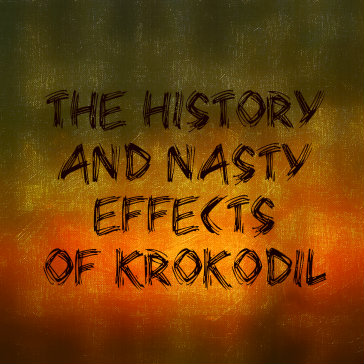 More recently, the drug resurfaced in poor areas of Russia around 2002 where it was seen as a cheap substitute for heroin. Krokodil is a concoction of codeine and any number of harsh chemicals which might be found around the house or in the garage. It has been cheap to make because until not long ago codeine was sold over-the-counter in Russia.
More recently, the drug resurfaced in poor areas of Russia around 2002 where it was seen as a cheap substitute for heroin. Krokodil is a concoction of codeine and any number of harsh chemicals which might be found around the house or in the garage. It has been cheap to make because until not long ago codeine was sold over-the-counter in Russia.
From 2002-2010 use of Krokodil spread across Russia, dragging what is guessed to be several million addicts in its wake. Exact figures on the numbers of users are hard to come by since the drug is essentially a form of suicide. Many users die within two years of starting to inject Krokodil. Why would people take such a scary drug? Because it is three times cheaper than heroin and 10 times stronger than codeine.
Krokodil did not remain in Russia. It is believed to have spread across Europe, taking hold in poor, mostly rural regions. It is now thought that Krokodil has crossed the ocean to Central or perhaps North America. There was a highly publicized report of a young girl who showed up in a hospital in Mexico City with what doctors thought to be a severe STD. Instead, it turned out that the girl had been injecting Krokodil into her genital area for a period of months.
Nasty Effects Of Krokodil On The Body
Krokodil is gruesome in that the drug destroys the user’s body from within. The drug causes blood vessels to break open and nearby tissue to die. Like the corrosive agents used to make the drug, lesions eat away a person’s flesh right down to the bone. It is called Krokodil because at the site where the person injects themselves with the drug the skin takes on a toughened, scale-like appearance. It gets a foothold among groups where heroin is too expensive. In the U.S. evidence shows a similar trend with many turning away from expensive prescription drugs in favor of far less costly street heroin.
Krokodil In The U.S.?
There have been unsubstantiated reports of Krokodil’s presence here in the United States, but so far no reports have been verified. Bringing a sample into a reputable lab is all that would be needed to determine that the drug has indeed come to America. Experts suggest that there is really no reason for Krokodil to find a home in this country.
Drug enforcement agents, addiction specialists and others say that the fact that Americans can afford less immediately lethal street drugs is reason enough to forego Krokodil. Though Krokodil, like methamphetamine, is a drug made as a home-brew, it is still hard to find, so why would drug users go looking for it? Lastly, Krokodil’s high is dependent on codeine – a substance that is far more controlled in this country than in other parts of the world.
So while the drug has definitely been traveling around the globe in recent years, it does not appear to have landed here as of yet. Still, the hopelessness that would drive a person to use such a frighteningly destructive drug is enough to warrant concern here at home and around the world.
Read More About Reported Cases Of Krokodil Use In The U.S.
A new report shows a rise in U.K. hospital emergency room visits by adults in their forties for drug or alcohol issues. The country’s health providers are determined to continue tackling the issue of drug and alcohol abuse as they strive to lower the rate of substance abuse.
The report came from data firm Dr Foster Intelligence. The group used ER admissions records as the basis for who is most often abusing drugs and alcohol and how often that abuse reaches the level of required hospitalization. According to their 2013 Hospital Guide:
Hospitalizations For Drug And Alcohol Abuse
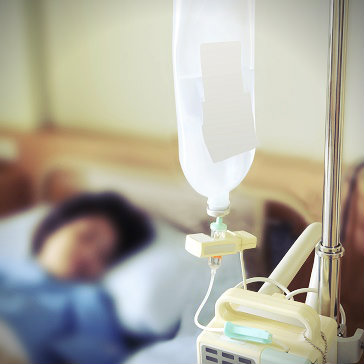 19 percent of ER admissions of 40-44 year olds were directly related to alcohol or drug use. That figure was highest among all age groups.
19 percent of ER admissions of 40-44 year olds were directly related to alcohol or drug use. That figure was highest among all age groups.- 18 percent of 45-49 year old admissions were for the same alcohol or drug reasons.
- In 2002-2003 the average age for a binge-drinking related hospitalization was 16 years. By 2004-2005 the typical age was 19. In 2012-13 the average age of those entering the hospital for binge drinking was 32 years.
- Despite the rise in average age for binge drinking ER visits, adolescents and young adults remain the most apt to need hospital care for binging.
Based on the Dr Foster report, young people are revealing more wisdom than their parents. Part of the problem is that an alarming number of patients don’t seem to be finding their way to recovery:
- The typical age of a person needing hospitalization for drugs or alcohol reasons in 2002-2003 was 41 years. In 2012-2013 the typical age was 43.
- Dr Foster found that over 500,000 individuals needed hospitalization for their alcohol or drug abuse at least one time during the past three years.
- At least 120,000 of those admitted to the hospital were 40-something years old. That is double the number of folks in their 20s or 60s who needed hospital care for drugs or alcohol.
Repeat ER Visits For Drugs Or Alcohol
Looking at all hospital admittances for alcohol or drugs in 2012-2013 a surprising 36 percent had already been admitted more than one time for the same problem in the past. And five percent had been in the hospital for drug or alcohol issues five times or more.
The problem appears to be most acute among the poor in Britain, with 36 percent of ER visits coming from the poorest regions of the country, and only nine percent of them coming from wealthy sections of the population.
A Dr Foster spokesman said that their figures were likely on the low end of actual numbers. The group only used hospital admittances where alcohol or drugs were 100 percent responsible. Left out were the high number of other admissions where substances played a key role.
Turning The Substance Abuse Hospital Visit Problem Around
Healthcare workers and National Health Services spokespeople say that there are ways to turn the problem around. For example, in 22 percent of the hospitalizations no general practitioner was listed on the health form. This could indicate that people are attempting to hide their problem from their primary care doctor rather than use them as a resource. If primary care doctors would use the NHS Healthcheck guide as a screening tool for substance abuse, more cases might be able to be treated before they reached a critical stage.
Hospitals also intend to implement more direct interventions by health professionals. Placing nurses who function as alcohol liaisons in the ER is one way to accomplish that goal.
Read More About Increased ER Visits For Surprising Drugs
13 Dec 2013
Why Has There Been A Sharp Increase In PCP Use?
The Substance Abuse and Mental Health Services Administration (SAMHSA) produces regular reports based on population groupings that track drug use trends in the United States. In a recent Drug Abuse Warning Network (DAWN) report, SAMHSA provided evidence of a sharp spike in PCP use.
Forms Of PCP
Phencyclidine, otherwise known as PCP or angel dust, is found in various forms, including crystal, capsule, tablet, powder and liquid. It’s often found in the form of marijuana and/or tobacco joint dipped in liquid PCP called a Sherm, which is named for Nat Sherman cigarettes. PCP first emerged in major U.S. cities in 1967, and by 1978 it was called the country’s number one drug problem on 60 Minutes.
PCP’s Recent Sharp Rise In Use
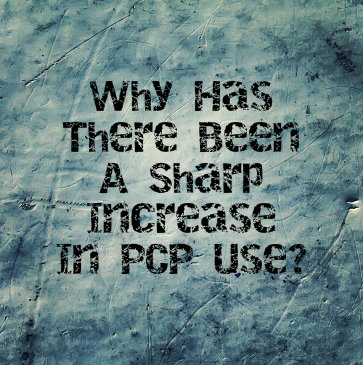 Its popularity had dropped significantly throughout the 80s and 90s until, according to SAMHSA, PCP-related emergency room visits rose 400 percent between 2005 and 2011, and actually doubled from 2009 to 2011, from 36,719 to 75,538.
Its popularity had dropped significantly throughout the 80s and 90s until, according to SAMHSA, PCP-related emergency room visits rose 400 percent between 2005 and 2011, and actually doubled from 2009 to 2011, from 36,719 to 75,538.
Dangerous Effects Of PCP
The hallucinogen is considered to be exceptionally dangerous because users can become extremely violent. Users report feeling detached from their surroundings, with dangerous side effects including seizures, irregular breathing and comas. PCP is also addictive and can result in high levels of anxiety and suicidal thoughts.
The most significant increase by age was demonstrated among adults aged 25 to 34, with a 518 percent increase from 3,643 visits to 14,175. In 2011 males comprised 69 percent of the 75,538 ER room visits and 45 percent of the visits were by adults between the ages of 25 to 34. PCP was combined with other drugs 72 percent of the time: with one other substance in 37 percent of ER visits, two other substances in 18 percent and 3 or more substances another 18 percent.
Public Education Needed On PCP’s Dangers
The study authors explained PCP’s resurgence using the term “generational forgetting,” meaning that what once was widely recognized as a dangerous drug is now resurging due to an uneducated public.
The authors recommend targeting 25- to 34-year-olds for education and prevention efforts, including tobacco and marijuana awareness due to the possibility of cigarettes and joints being laced with PCP.
The findings of SAMHSA reports are used by many groups: policymakers access the reports to ensure that adequate substance abuse treatment facilities serve their communities; law enforcement personnel can use the data to determine where their efforts need to be focused and learn which substances may be most dangerous in their area of service; the findings are also used in clinical settings to develop useful screening tools for patients in order to detect the use of other substances or the presence of additional mental health concerns.
There may also be a need for increased training efforts among emergency department personnel related to recognize the signs and symptoms of PCP use and the recommendations for treatment.
Read More About The Risks Of Meth And IV Drug Use
10 Dec 2013
Are Current Drug Policies Really Not Working?
A report out of the United Kingdom highlights the widespread distribution of illegal street drugs, with the researchers calling the war on drugs a failure. The experts say it’s time to address drug use through a public health approach rather than as a criminal justice initiative.
Illegal Drugs – Stronger, Cheaper And More Readily Available
The study from the International Centre for Science in Drug Policy, which examined decades of drug surveillance data involving the trafficking of marijuana, cocaine and opiates like heroin, showed that illegal drugs are cheaper, purer and more available than ever.
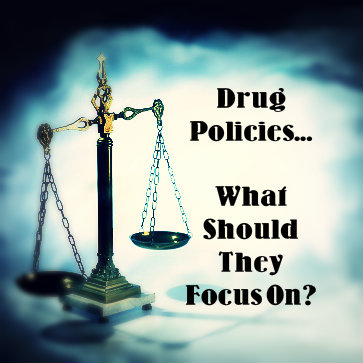 The findings highlighted the decrease of drug prices between 1990 and 2010, while purity and potency increased. In Europe the price of opiates and cocaine decreased by 74 percent and 51 percent during that time period.
The findings highlighted the decrease of drug prices between 1990 and 2010, while purity and potency increased. In Europe the price of opiates and cocaine decreased by 74 percent and 51 percent during that time period.
In addition, seizures of drugs increased during the study period. In most locations that were monitored the amount of cocaine, cannabis and heroin confiscated by law enforcement increased substantially during the years examined.
Should The Focus On Curbing Drug Use Shift?
The authors of the report note that the findings should be taken as an indication that current strategies to curb drug distribution are failing. However, despite these concerns, the focus for national governments has been law enforcement. Other approaches, such as decriminalization and legal regulation, have not been broadly incorporated.
Co-author Dr. Evan Wood, scientific chairman of the Centre, explained that the focus should shift to drug use as a public health concern rather than a criminal charge. Wood also talked about the need for increased addiction treatment availability and other public health strategies.
Just days before the findings were released, a senior UK police officer offered his opinion that decriminalization would be more effective than the current approach.
How Decriminalization Of Drug Offenders May Be A Positive Thing
Mike Barton, Chief Constable of Durham Police, voiced his position that drug users needed treatment and care, not criminal justice. Barton also said that decriminalization would threaten the motivation of dealers by taking away their income and power.
Instead, prohibition funds the drug dealers, says Barton, who is calling for an open debate that acknowledges the problems that still exist in the fight to reduce drug use.
Recovery Treatment Or Criminal Charges?
While the overall global strategy is prohibition, there are some national governments incorporating different policies. In Portugal individuals caught possessing drugs can avoid criminal charges if they undergo treatment.
While a more public health-focused approach seems clear to some in the scientific community, public officials have been less enthusiastic. No political party in the UK supports a legal regulation approach when it comes to hard drugs, but some politicians support legalizing marijuana.
Many recognize the delicate balance between treating drug use as a criminal justice issue and providing support for the recovery of the user. The community must be protected from the influence of the drug market, but the individual must be supported in their recovery, too.
Read More About Drug Use In The News
Crystal methamphetamine (crystal meth) is an illegal, illicitly produced form of methamphetamine, a tightly controlled stimulant drug with limited but real usefulness as a legitimate medication. People who use/abuse this illegal product run significant risks for developing a range of serious or potentially deadly health complications. According to the results of a study published in October 2013 in the Canadian Medical Association Journal, teenagers and young adults who use crystal meth substantially increase their chances of getting involved in IV (intravenous) drug use, a form of drug use strongly associated with severe substance-related health problems.
How Methamphetamine And Crystal Meth Effects The Body
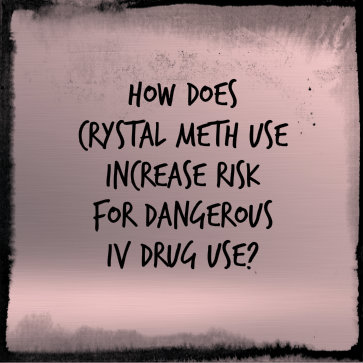 Methamphetamine is a close chemical relative of amphetamine; like that well-known stimulant medication, it produces euphoric sensations and sharply boosts the baseline activity rate inside the brain. Over time, the brain can get accustomed to methamphetamine’s effects and develop a dependence on the drug’s presence. In turn, dependence on methamphetamine is often a precursor for methamphetamine addiction, a highly disruptive and destructive combination of dependence, drug cravings and drug-oriented lifestyle patterns. Doctors occasionally prescribe legal, pharmaceutically manufactured methamphetamine to treat cases of narcolepsy, severe obesity or attention-deficit/hyperactivity disorder (ADHD).
Methamphetamine is a close chemical relative of amphetamine; like that well-known stimulant medication, it produces euphoric sensations and sharply boosts the baseline activity rate inside the brain. Over time, the brain can get accustomed to methamphetamine’s effects and develop a dependence on the drug’s presence. In turn, dependence on methamphetamine is often a precursor for methamphetamine addiction, a highly disruptive and destructive combination of dependence, drug cravings and drug-oriented lifestyle patterns. Doctors occasionally prescribe legal, pharmaceutically manufactured methamphetamine to treat cases of narcolepsy, severe obesity or attention-deficit/hyperactivity disorder (ADHD).
Crystal meth gets its name from its characteristic crystalline appearance. In America, most of the available supply of this drug comes from illegal, large-scale manufacturing facilities located on U.S. territory or in other countries. Some crystal meth also comes from small-scale operations that only service local areas. Depending on the process used during its creation, illegally made methamphetamine can contain a number of highly dangerous compounds, including sulfuric acid, acetone, hydrochloric acid or red phosphorus. Since use of crystal meth inevitably takes place outside of a legitimate medical context, it inherently constitutes a form of drug abuse. People who habitually use the drug have exceedingly high risks for developing an addiction or other major health problems such as drug overdoses, disturbed or violent mood shifts, extreme tooth and gum damage (meth mouth) and psychosis (hallucinations and/or delusional thought processes).
IV Drug Use
IV drug use is the common term for the purposeful injection of drugs directly into the bloodstream. As a rule, doctors and other medical professionals use this term in reference to the injection of recreational substances rather than medications. IV drug abusers commonly rely on direct bloodstream access to rapidly deliver substances to their brains, and thereby rapidly trigger the effects associated with those substances. IV drug injection carries risks above and beyond the risks classically associated with recreational drug use in general.
IV Drug Use Risks
- Increased chances of drug overdose
- Dangerous or lethal infections such as hiv/aids or hepatitis b or c
- Lethal infection-related complications such as bacteremia or sepsis
- Increased chances of developing pneumonia
- And increased chances of dangerous contaminants or additives
How Crystal Meth Use Increases Chance Of Falling Into IV Drug Use
In the study published in the Canadian Medical Association Journal, researchers from several Canadian institutions used information gathered from a project called the At-Risk Youth Study to examine the potential connection between crystal meth use and the initiation of IV drug use among teenagers and young adults between the ages of 14 and 26. All told, 991 individuals submitted answers to questionnaires regarding their baseline drug-using behaviors. At the beginning of the study, 395 of these individuals were crystal methamphetamine users, while another 390 were IV drug users. The researchers tracked the drug use patterns of all 991 participants over five years in order to uncover any developing trends.
Altogether, 16 percent of the participants not initially involved in IV drug use began taking drugs intravenously over the course of the study. After analyzing their data, the researchers found that the recent use of a non-injectable form of crystal methamphetamine is clearly linked to increased chances of beginning IV drug use. In most cases, prior users of non-injectable crystal meth choose this drug for their first forays into intravenous use. The researchers also found that the average young user of crystal meth who initiates IV drug intake makes the transition to intravenous use at the exceptionally early age of 14.
Meth Treatment Significantly Needed In City, Street Culture
The authors of the study published in the Canadian Medical Association Journal gathered their data from young people either living on the street or heavily involved in local street culture. They believe that their findings indicate an urgent need to address crystal methamphetamine use in this population and curb the transition to IV drug use.
Read More About The Connection Between Hepatitis C And IV Drug Users And Get Help Today!



